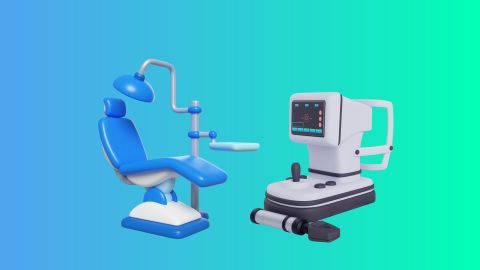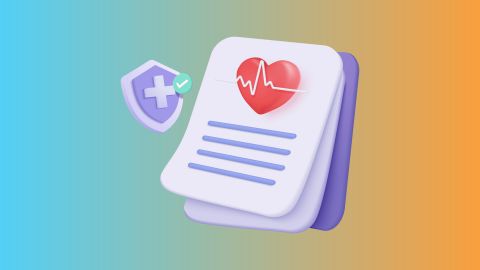What is physiotherapy equipment?
Physiotherapy equipment refers to a wide range of tools and devices designed to assist in the treatment and rehabilitation of musculoskeletal and neurological conditions. These machines support exercises, stimulate muscles, relieve pain, and enhance mobility for patients undergoing physiotherapy.As a vital category of medical equipment, physiotherapy tools are commonly used in hospitals, rehabilitation centres, sports clinics, and increasingly in home-based therapy. From electrotherapy machines to traction units and exercise aids, each device is tailored to specific therapeutic needs and patient goals.
Features of physiotherapy equipment
Physiotherapy equipment is engineered with features that enhance functionality, safety, and user comfort. While features vary by device type, common characteristics include:- Adjustable intensity and frequency settings to suit individual therapy needs.
- Digital or touchscreen interfaces for easy control and operation.
- Lightweight and ergonomic designs suitable for portable use.
- In-built safety mechanisms to prevent overheating or electrical faults.
- Pre-set therapy programmes for different conditions.
- Compatibility with a wide range of accessories and attachments.
- Battery-powered or plug-in options for operational flexibility.
- Durable construction for long-term clinical use.
Types of physiotherapy equipment
There are several types of physiotherapy equipment, each serving distinct functions depending on the nature of treatment. These include:- Electrotherapy devices: TENS, IFT, and EMS machines that help reduce pain and improve muscle stimulation.
- Ultrasound therapy units: Used for deep tissue healing and inflammation control.
- Laser therapy machines: Assist in pain relief and tissue regeneration.
- Shortwave diathermy machines: Provide heat therapy to deeper muscle layers.
- Traction equipment: Cervical and lumbar traction devices that help in spine alignment and disc relief.
- Exercise therapy tools: Resistance bands, balance trainers, and pulley systems for strengthening and mobility exercises.
- Combination therapy units: Devices that integrate electrotherapy and ultrasound therapy in one unit.
- Hot and cold therapy devices: Support muscle recovery and reduce inflammation.
Benefits of physiotherapy instruments
Physiotherapy instruments provide a wide array of benefits that support recovery and overall physical well-being. Some key advantages include:- Non-invasive treatment options with minimal side effects.
- Effective pain management and inflammation reduction.
- Restoration of joint and muscle mobility.
- Accelerated recovery after surgeries or injuries.
- Prevention of physical disabilities through structured therapy.
- Improved circulation and tissue healing.
- Support for long-term physical maintenance and chronic care.
- Enhances quality of life through improved physical function.
How to choose the right physiotherapy equipment
Choosing the appropriate physiotherapy equipment involves assessing several factors to ensure it meets both therapeutic requirements and practical needs.- Identify the primary goal whether it’s pain relief, muscle strengthening, mobility improvement.
- Consider the patient’s condition, acute, post-surgical, or chronic.
- Evaluate ease of use, especially for home-based therapy.
- Look for features like adjustable settings, safety controls, and pre-set programmes.
- Check brand reputation, warranty terms, and service availability.
- Ensure compatibility with accessories or therapy modes.
- Determine whether a portable or stationary device suits your usage better.
- Align your choice with budget without compromising essential features.
Physiotherapy machine price in India
The cost of physiotherapy equipment in India varies significantly depending on the machine type, features, and brand. Below is an indicative price table for commonly used equipment:| S. No. | Physiotherapy Equipment | Minimum Price (₹) | Maximum Price (₹) |
| 1 | TENS Therapy Machine | ₹1,800 | ₹1,50,000 |
| 2 | Cervical/Lumbar Traction Kit | ₹1,350 | ₹2,500 |
| 3 | Cervical/Lumbar Traction Machine | ₹15,000 | ₹25,000 |
| 4 | Continuous Passive Motion (CPM) Machine | ₹40,000 | ₹2,00,000 |
| 5 | Shortwave Diathermy Therapy Machine | ₹21,000 | ₹8,10,000 |
| 6 | Muscle Stimulator Therapy Machine | ₹1,000 | ₹72,000 |
| 7 | Laser Therapy Equipment | ₹29,700 | ₹1,20,000 |
| 8 | Shockwave Physiotherapy Machine | ₹40,500 | ₹7,25,000 |
Prices may vary based on supplier, brand, technology, and bundled accessories. Always compare specifications before purchase.
Maintenance tips for physiotherapy equipment
Routine maintenance helps preserve equipment performance, reduce operational issues, and extend service life. Here are some practical tips:- Clean all surfaces and electrodes with recommended solutions after each session.
- Store devices in a dry and dust-free environment.
- Check cables, connectors, and battery units regularly.
- Avoid prolonged exposure to moisture or direct sunlight.
- Follow the user manual for safe operating procedures.
- Schedule periodic calibration and servicing for high-precision machines.
- Replace worn-out parts or pads as per manufacturer guidance.
- Keep records of maintenance and servicing dates for better tracking.
Conclusion
Physiotherapy equipment is integral to effective rehabilitation, offering targeted treatment and supporting patients on their journey to recovery. Whether for clinical use or home therapy, selecting the right equipment depends on therapy goals, device features, and maintenance feasibility.To make your purchase more convenient, explore flexible medical equipment finance options that help you invest in advanced physiotherapy tools without financial strain. Check offers on medical equipment finance to upgrade your practice with advanced tools.




